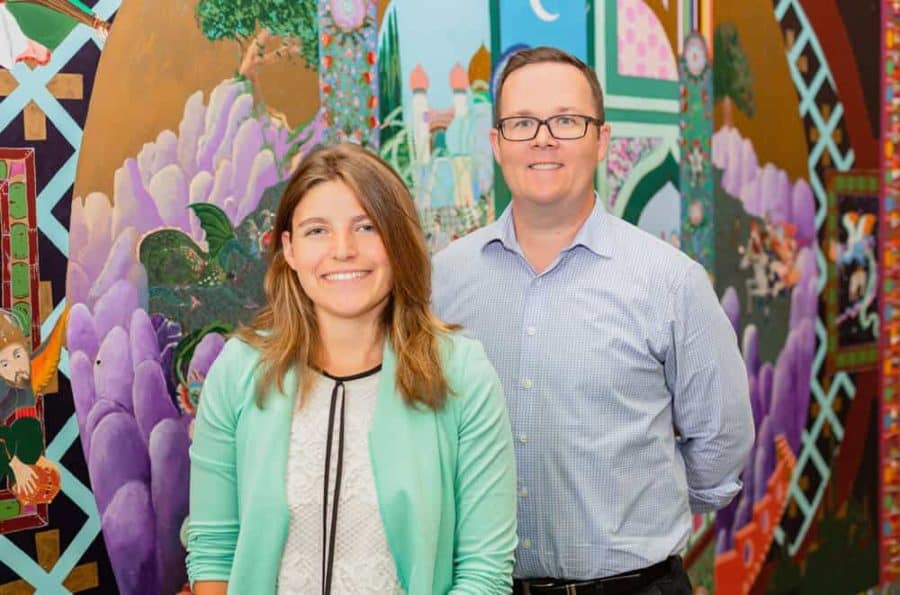Anyone using social media has seen edited, heavily curated photos and idealized descriptions of events in other people’s lives.
In a new study, two University of Texas at Dallas psychology researchers examined how that experience can lead to negative feelings and described how social comparisons can precipitate the fear of missing out, or FOMO.
Kaitlyn Burnell, a psychological sciences doctoral student in the School of Behavioral and Brain Sciences, is the corresponding author of the study published in the journal Cyberpsychology: Journal of Psychosocial Research on Cyberspace. The research team analyzed the established link between lurking — the passive use of social media — and depression in college-age students.
“When a person is drawn to social media, they first browse other people’s content. That process can evoke comparisons between themselves and those people,” Burnell said. “Our results suggest that this can yield a fear of missing out — the feeling that others are having more rewarding experiences. That, in turn, is related to depressive symptoms and indicators of poor well-being.”
Blackberry Project
The research is part of the Blackberry Project, a multiyear study funded by the National Institutes of Health that investigates how engaging in and being the victim of social and physical aggression is related to the development of aggressive behavior among adolescents.
“This study … is the first investigation to show that the fear of missing out may follow from comparing your inner experiences to someone else’s greatest hits posted online and that this fear predicts feeling depressed and bad about yourself.”
Kaitlyn Burnell, a psychological sciences doctoral student in the School of Behavioral and Brain Sciences
Dr. Marion K. Underwood, dean of the College of Health and Human Sciences at Purdue University, founded the study — then called the Friendship Project — in 2003 when she was on the faculty of UT Dallas. Affiliated work continues at multiple institutions.
A senior author of the study, Underwood described the effort to delineate a pathway from passive social media use to depressive symptoms as “groundbreaking.”
“This study of the possible effects of young people lurking online is the first investigation to show that the fear of missing out may follow from comparing your inner experiences to someone else’s greatest hits posted online and that this fear predicts feeling depressed and bad about yourself,” she said.
The study’s 717 participants, averaging 21 years old, were evaluated for their use of Facebook, Instagram, Twitter and Snapchat.
“Published studies thus far have focused primarily on Facebook but, for the younger audience, Facebook has faded in usage significantly,” Burnell said. “Instagram and Snapchat are their top platforms, so that’s where the attention should be.”
Active vs. Passive Use
Burnell emphasized the difference between active social media use — uploading content and initiating direct interactions with other people — and passive use, described as browsing feeds without any kind of social exchange.
“Active use is suspected to be associated with improved subjective well-being, whereas passive browsing is suspected to be particularly harmful,” Burnell said. “Studies suggest young people are mostly passively browsing.”
The UT Dallas researchers are especially interested in self-evaluations of appearance and social acceptance — concepts that can become skewed by the sanitized versions of people’s lives shared online.

Burnell and Vollet emphasized that there is no absolute, good-or-bad statement to be made about social media use.
“People upload filtered photos that enhance how they look, which can evoke comparisons such as, ‘Other people look better than I do,’” Burnell said. “Similarly, users show the good times they’re having, yet you’re only seeing positive representations and events.”
Prior research has posited that picture-centric platforms such as Instagram and Snapchat are more conducive to causing appearance-oriented comparisons. Yet the new study found that such logic only applied to Instagram.
“One might expect Snapchat to be more strongly related,” Burnell said. “But users say Snapchat is mainly used for humorous content.”
Dr. Justin Vollet, a UT Dallas postdoctoral research associate and an author of the study, said some people appear to be more prone to the fear of missing out, and it manifests in how often they check certain social media sites.
“Some people with this fear trait act on it by logging on and lurking frequently, and that repeated exposure just compounds the negative effect,” he said. “Others act on that impulse less frequently.”
Nevertheless, Vollet and Burnell stressed that there is no absolute, good-or-bad statement to be made about social media use.
“It can be harmful for a very specific type of person in a very specific type of situation,” Burnell said. “In other situations, it can be very positive. For instance, you could have an LGBT youth who isn’t finding the support that they need in their immediate social circle. They might find that support on social media.”
Vollet continued: “We’re talking about adolescents in a developmental period of life, and kids just want to be around each other. These platforms allow them to do that in ways that earlier generations weren’t able to. Being connected is ultimately good for them, depending on how they are using the media.”
Future Work
Burnell noted that, because of the cross-sectional nature of the study, further research is needed to verify the sequential nature of the findings.
“Although our reported path was the best fit, we cannot definitively say that social comparisons cause FOMO without more experimental and longitudinal research,” she said.
For her dissertation, Burnell is using an eye tracker to gather more data on what teens and college students are looking at on their Instagram feed and how the information affects them.
“We’re capturing those viewed posts and classifying them by content,” she said. “We need to see the exact content that they’re looking at to be sure of what’s happening.”
Other authors of the paper include Samuel E. Ehrenreich BA’07, BS’07, MS’11, PhD’12, an assistant professor of human development and family studies at the University of Nevada, Reno, and Dr. Madeleine George, a postdoctoral research fellow under Underwood at Purdue.


